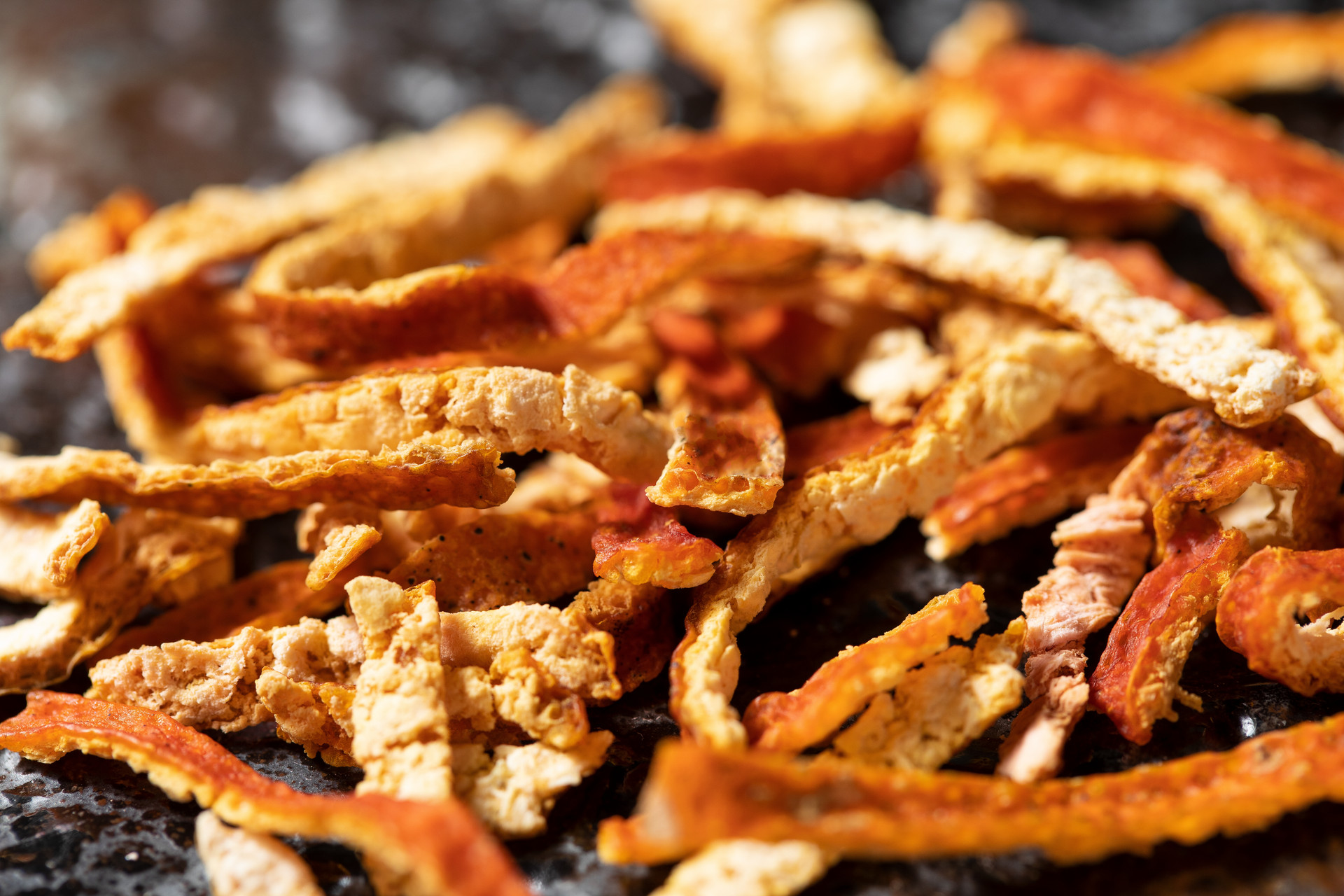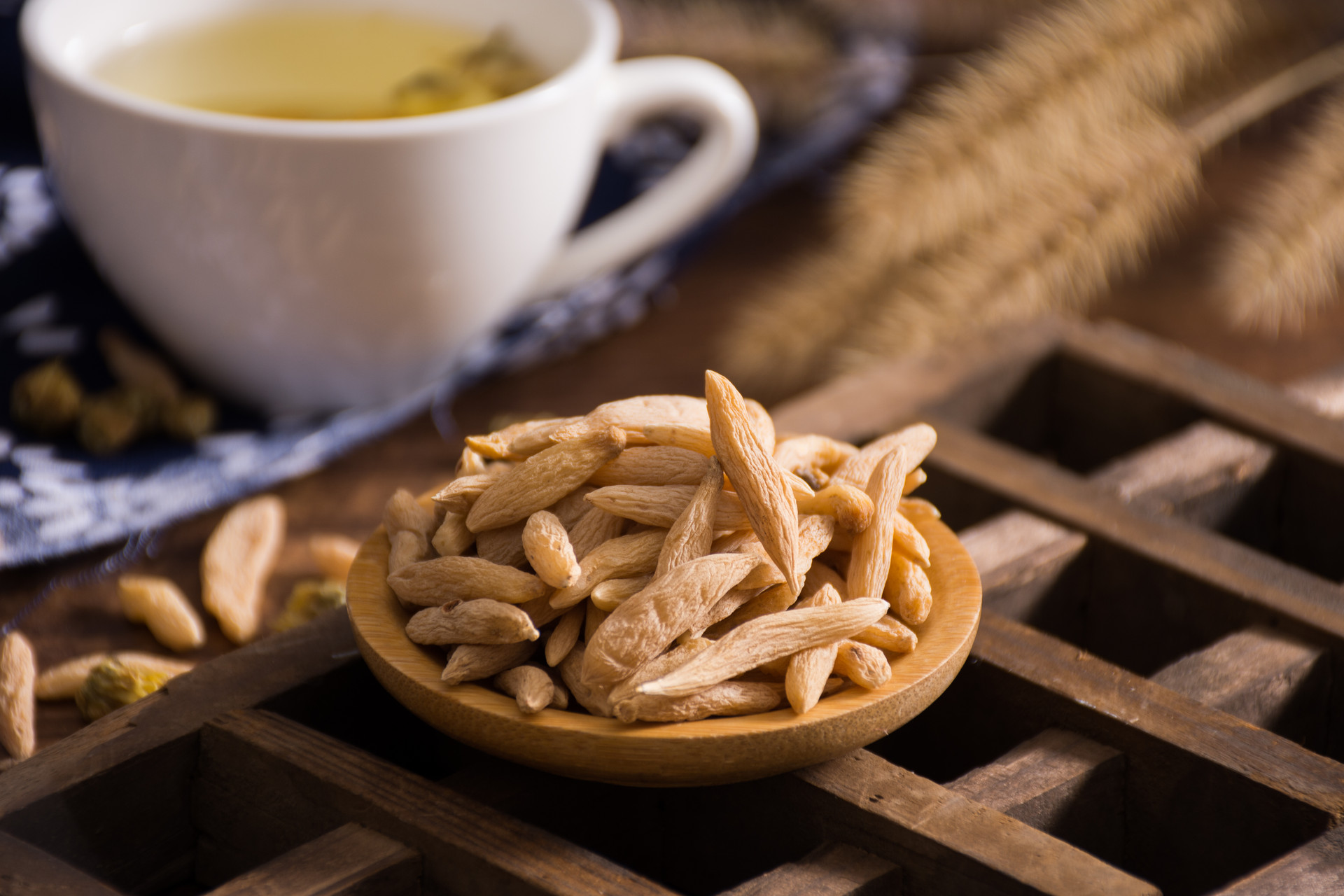I have found that there is a phenomenon of mixing up the use of Muxiang and Chuanmuxiang in the process of dispensing. Although both drugs belong to the same family (Compositae) plants and are listed under the same entry of "Muxiang" in "Chinese Materia Medica", their chemical compositions, functions and indications, characteristics, microscopic identification, and thin layer chromatography are not exactly the same, so they should not be mixed up.
1. Functions and indications
【Muxiang】: Functions in promoting the circulation of qi and relieving pain, invigorating the spleen and promoting digestion. It is used for chest and abdomen distension and pain, persistent diarrhea, indigestion, and loss of appetite. Roasted Muxiang is used for stopping diarrhea caused by intestinal disorders.
【Chuanmuxiang】: Functions in promoting the circulation of qi and relieving pain. It is used for epigastric and abdominal distension and pain, abdominal diarrhea with rumbling and urgency, discomfort in the ribs, and liver and gallbladder pain.
2. Chemical composition
【Muxiang】: The root contains 0.3%-3% volatile oil, 0.05% saussurine, and 18% inulin. The main components in the oil are costuslactone, dinydrocostus-lactone, α-cost01, α-costic acid, saussurea lactone, denydcrostus lactone, iso-alantolactone, as well as aplotaxene, α and β-costene, α and β-ionone, and about 20 amino acids.
【Chuanmuxiang】: The root contains volatile oil and inulin. The volatile oil contains mokkolactone, which can be separated into alantolactone.
3. Characteristics identification
【Muxiang】: It is the dried root of the Compositae plant Aucklandia lappa Decne. It is cylindrical or semi-cylindrical, 5-10 cm long, and 0.5-5 cm in diameter. The surface is yellow-brown to gray-brown, with obvious wrinkles, longitudinal grooves, and lateral root marks. It is hard and not easy to break, with a gray-brown to dark brown cross-section. The cut surface has a gray-yellow or light brown-yellow margin, forming a ring of brown color, with radial texture and scattered brown oily spots. It has a distinctive aroma and a slightly bitter taste.
【Chuanmuxiang】: It is the dried root of the Compositae plant Vladimiria souliei (Franch.) Ling or Vladimiria souliei (Franch.) Ling Var. cinerea Ling. It is cylindrical or semi-cylindrical with longitudinal grooves, slightly curved, 10-30 cm long, and 1-3 cm in diameter. The surface is yellow-brown or brown-brown, with longitudinal wrinkles. The peeled-off skin can be seen with gourd-shaped fine veins; the root head sometimes has black sticky gelatinous substances, commonly known as "oil head". It is relatively light in weight, hard and brittle, easy to break, and the cut surface is yellow-white or yellow, with sparse yellow oily spots and cracks. The wood is wide with radial texture; some have a decayed center. It has a slight aroma and a bitter taste, and it sticks to teeth when chewed.
4. Thin layer chromatography
【Muxiang】: Take 0.5 g of the powder, add 10 mL of chloroform, perform ultrasonic treatment for 30 minutes, filter, and use the filtrate as the test solution. Take denydrocostus lactone and costene as reference substances, respectively add chloroform to make a solution containing 0.5 mg/mL, which serves as the reference solution. Perform thin layer chromatography (Appendix ⅥB) test, take 5 μL of the test solution and the reference solution, respectively spot them on the same silica gel G thin layer plate with carboxymethyl cellulose sodium as the adhesive, use chloroform and cyclohexane (5:1) as the developing agent, develop, take out, dry, spray with 1% vanillin sulfuric acid solution, and heat until the spots have clear coloration. In the test solution chromatography, spots with the same color appear at the corresponding positions as in the reference solution chromatography.
【Chuanmuxiang】: Take 2 g of the powder, add 20 mL of ether, perform ultrasonic treatment for 20 minutes, filter, evaporate the filtrate, add 1 mL of methanol to dissolve the residue, and use it as the test solution. Take Chuanmuxiang as the reference medicinal material and prepare the reference medicinal material solution using the same method. Perform thin layer chromatography (Appendix ⅥB) test, take 5 μL of the two solutions mentioned above, respectively spot them on the same silica gel G thin layer plate, use toluene and ethyl acetate (19:1) as the developing agent, develop, take out, dry, spray with 5% vanillin sulfuric acid solution, and heat until the spots have clear coloration. In the test solution chromatography, spots with the same color appear at the corresponding positions as in the reference medicinal material chromatography.
5. Microscopic identification
【Muxiang】: The powder is yellow-green. Inulin is commonly seen, and the surface has a radial texture. The wood fibers are mostly bundled and elongated, with a diameter of 16-24 μm, and the pit apertures are cracked, cruciform, or herringbone-shaped. Reticulate vessels are common, and there are also vessels with bordered pits, with a diameter of 30-90 μm. Oil chamber fragments are sometimes visible, containing yellow or brown secretions.
【Chuanmuxiang】: In the transverse section, the cork layer can be seen as a series of brown cells, and the rays in the phloem are wider. The sieve tube groups and fiber bundles, as well as the vessel groups and fiber bundles in the wood, are arranged alternately radially, forming a neat radial pattern. The cambium layer is wavy, the fiber bundles are yellow, lignified, and accompanied by stone cells. The pith has been ruptured. Oil chambers are scattered in the ray and pith parenchyma. In thin-walled cells, inulin can be seen.
In summary, although Muxiang and Chuanmuxiang have some similarities, they have significant differences when carefully distinguished. In the actual dispensing work, careful identification should be made to prevent mixing them up.
- Home /
- Chinese Medicinal Materials /
- Identify /
- Contents
Differentiating Muxiang and Chuanmuxiang: Similarities and Distinctions in Chinese Materia Medica
Everyone Is Watching
-
 The Efficacy and Effects of Honeysuckle in Traditional Chinese Medicine
The Efficacy and Effects of Honeysuckle in Traditional Chinese MedicineHoneysuckle, also known as Lonicera, is a common and valuable plant in traditional Chinese medicine. Since ancient times, honeysuckle has been widely used in the field of traditional Chinese medicin
April 9, 2024 -
 The Benefits and Effects of Ginseng: Exploring the Miraculous Medicinal Treasure
The Benefits and Effects of Ginseng: Exploring the Miraculous Medicinal TreasureGinseng, a widely recognized precious medicinal herb around the world, has been hailed as the "King of Herbs" since ancient times. In Asian regions such as China, Korea, Japan, and Russia, ginseng i
March 26, 2024 -
 Comparing Turmeric, Curcuma, and Zedoary: Promoting Blood Circulation and Regulating Qi
Comparing Turmeric, Curcuma, and Zedoary: Promoting Blood Circulation and Regulating QiTurmeric, Curcuma, and Zedoary are three herbs that all have the ability to promote blood circulation and regulate qi. They are commonly used together in clinical practice, but they do have some sligh
February 22, 2024 -
 Coptis: A Closer Look at its Morphological Characteristics
Coptis: A Closer Look at its Morphological CharacteristicsThe morphological characteristics of Coptis: rhizome, yellow, often branched, densely covered with numerous fibrous roots. Leaves with long petioles; leaf blades slightly leathery, ovate-triangular,
December 22, 2023 -
 Qianghuo: A Powerful Herb for Joint Health and Pain Relief
Qianghuo: A Powerful Herb for Joint Health and Pain ReliefQianghuo is the root of the umbelliferous plant Qianghuo. It has a warm nature, a bitter taste, and enters the bladder and kidney meridians. It has the effects of dispelling exterior cold, expell
December 13, 2023

Hot Picks
-
 1Distinguishing Similar Plant Species: A Comparative Study
1Distinguishing Similar Plant Species: A Comparative StudyRose and Rose The former has a round ball shape, pink or purple color, and elongated sepals. The latter has a slightly spherical shape, mostly purple color, and spherical sepals. North American
February 27, 2024 -
 2Bitter Sophora Root: Identification and Adulterant Testing
2Bitter Sophora Root: Identification and Adulterant TestingBitter Sophora Root, which is long cylindrical in shape, often branches at the lower part, measuring 10-30cm in length and 10-30cm in diameter. The surface is grayish-brown or yellowish-brown, with lo
January 31, 2024 -
 3Hawthorn: A Traditional Chinese Medicine for Digestion and Stasis
3Hawthorn: A Traditional Chinese Medicine for Digestion and StasisHawthorn is a commonly used traditional Chinese medicine. It was first recorded in the Tang Dynasty's "Newly Revised Materia Medica". It has the functions of promoting digestion, resolving food stag
January 28, 2024 -
 4Identifying Genuine Snow Lotus Flower: Characteristics and Differences
4Identifying Genuine Snow Lotus Flower: Characteristics and DifferencesSnow lotus, also known as snow lotus flower, big toe flower, big wood flower, is a flowering herb of the Asteraceae family, including species such as Saussurea laniceps, Saussurea macrophylla, and Sau
December 1, 2023 -
 5Identifying Adulterated Longan Meat: Appearance, Smell, Touch, and Taste
5Identifying Adulterated Longan Meat: Appearance, Smell, Touch, and TasteLongan meat, also known as dried longan, yizhi, or mipi, is the false seed coat of the longan plant, a member of the Sapindaceae family. It has a warm nature and a sweet taste, and enters the heart an
November 28, 2023

